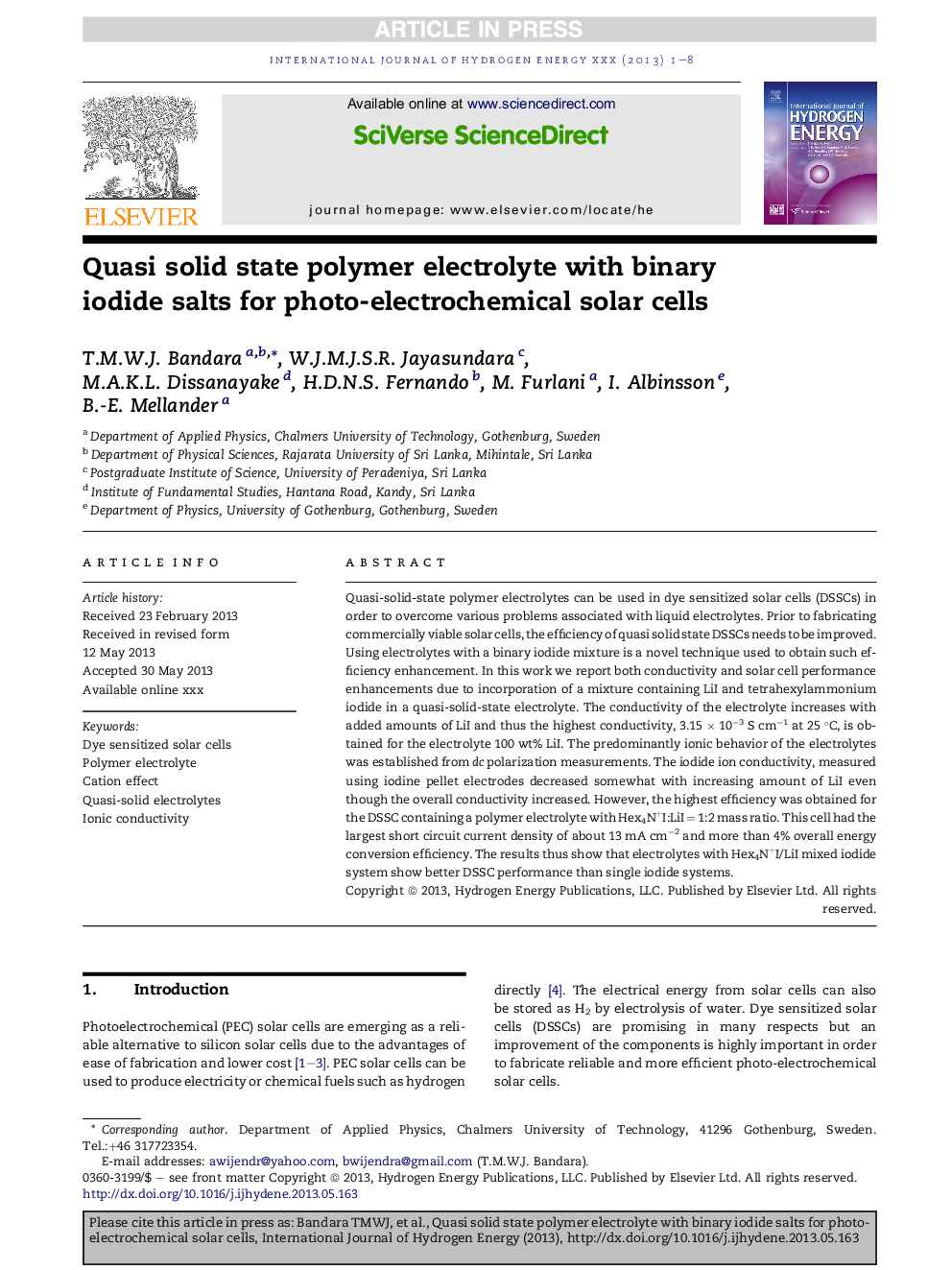| Article ID | Journal | Published Year | Pages | File Type |
|---|---|---|---|---|
| 7720768 | International Journal of Hydrogen Energy | 2014 | 8 Pages |
Abstract
Quasi-solid-state polymer electrolytes can be used in dye sensitized solar cells (DSSCs) in order to overcome various problems associated with liquid electrolytes. Prior to fabricating commercially viable solar cells, the efficiency of quasi solid state DSSCs needs to be improved. Using electrolytes with a binary iodide mixture is a novel technique used to obtain such efficiency enhancement. In this work we report both conductivity and solar cell performance enhancements due to incorporation of a mixture containing LiI and tetrahexylammonium iodide in a quasi-solid-state electrolyte. The conductivity of the electrolyte increases with added amounts of LiI and thus the highest conductivity, 3.15 Ã 10â3 S cmâ1 at 25 °C, is obtained for the electrolyte 100 wt% LiI. The predominantly ionic behavior of the electrolytes was established from dc polarization measurements. The iodide ion conductivity, measured using iodine pellet electrodes decreased somewhat with increasing amount of LiI even though the overall conductivity increased. However, the highest efficiency was obtained for the DSSC containing a polymer electrolyte with Hex4N+I¯:LiI = 1:2 mass ratio. This cell had the largest short circuit current density of about 13 mA cmâ2 and more than 4% overall energy conversion efficiency. The results thus show that electrolytes with Hex4N+I¯/LiI mixed iodide system show better DSSC performance than single iodide systems.
Keywords
Related Topics
Physical Sciences and Engineering
Chemistry
Electrochemistry
Authors
T.M.W.J. Bandara, W.J.M.J.S.R. Jayasundara, M.A.K.L. Dissanayake, H.D.N.S. Fernando, M. Furlani, I. Albinsson, B.-E. Mellander,
